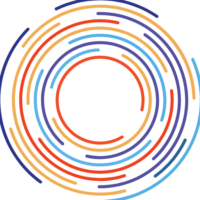Introduction
Stop right there! will AI truly replace the skilful technical writers? Scepticism arises as we witness the extraordinary progress of artificial intelligence, particularly the impressive language model, ChatGPT.
As we explore this intriguing topic, let’s dive into the world of AI-driven content generation and its potential impact on the esteemed profession of technical writing. Does ChatGPT, an exceptional AI tool, pose a real threat to the expertise of human writers, or can it become an invaluable ally in the ever-evolving realm of content creation?
Let’s navigate the realm of the chatbot, Chat GPT, and the visionary AI by OpenAI to uncover the future of technical writing.

Will ChatGpt Replace Technical Writers?
In the age of advanced AI tools like ChatGPT, some may question the relevance of human technical writers. However, human writers possess unique qualities that cannot be replaced by AI alone. The intricacies of human creativity and empathy in technical writing elevate the content, making it more relatable and engaging. Context and domain expertise, essential for accurate documentation, are better understood by human writers, ensuring precise and valuable information. Moreover, human-authored content establishes a sense of trust and rapport with readers, as they know it comes from a fellow human who understands their needs. In this era of AI, technical writers continue to play a vital role, providing a personal touch and invaluable insights.
What are the Advantages of ChatGPT in Technical Writing?
1. Speed and Efficiency
ChatGPT can generate content at an impressive speed, allowing technical writers to meet tight deadlines and handle multiple projects efficiently. It frees up writers from mundane tasks like repetitive copywriting, enabling them to focus on more creative aspects of their work.
2. Multilingual Capabilities
ChatGPT’s multilingual capabilities open doors to a broader audience and potential cost savings, as it can write in multiple languages in a single sentence, making it a valuable asset for businesses that need global reach.
3. Drafts and Outlines:
ChatGPT can help writers by generating drafts and outlines, providing a solid foundation for further expansion and refinement of the content. It’s like having a creative writing partner that can assist in organizing ideas and maintaining a consistent flow.

4. Research and Information Gathering:
As ChatGPT is trained on large and diverse datasets, it can help with research tasks by offering relevant information. However, it’s essential to keep in mind that due to its vast and diverse training data, there’s a possibility of inaccuracies or errors in the information it provides. Therefore, it’s crucial for human writers to verify and cross-reference the data obtained from ChatGPT to ensure the accuracy and reliability of the technical documentation.
5. Enhancing Creativity:
ChatGPT can be an invaluable creative writing tool. By providing suggestions, analogies, and metaphors, it helps writers elevate their content to the next level, creating unique and engaging articles that stand out from the crowd.

What are the Limitations of ChatGPT in Technical Writing?
1. Lack of Domain Expertise and Technical knowledge
Being a technical writer myself, I can understand the importance of domain expertise and technical knowledge. ChatGPT, while a powerful language model, lacks the human touch required for in-depth technical content creation. As writers, we ensure accuracy and understanding in our work, something ChatGPT might not achieve without human intervention.
2. Potential Inaccuracies and Errors in Generated Content
It’s essential to keep in mind that ChatGPT generates responses based on existing data, which could lead to potential inaccuracies. As professional writers, we always fact-check and verify information before presenting it to our readers, ensuring credibility and reliability.

3. Inability to Verify Sources
Unlike human writers, ChatGPT cannot verify sources, potentially leading to misleading information. That’s why having a skilled technical writer who can critically evaluate and corroborate sources is invaluable.
4. Tendency to be Verbose
ChatGPT may generate unnecessarily lengthy explanations, hindering the concise and clear communication needed in technical writing.
5. Absence of Originality
When it comes to originality, ChatGPT’s reliance on existing data might limit its ability to produce truly innovative content. A creative writer can bring fresh perspectives and novel ideas to technical writing, engaging readers with unique insights.
6. Face Difficulty with Code and Equations
Technical content often involves code snippets and complex equations. ChatGPT might face difficulty handling such elements accurately, whereas a skilled technical writer can expertly explain and simplify technical jargon.
For a deeper discussion on these topics and to see examples of how ChatGPT’s code can be detected, you can read an insightful article on “Can ChatGPT Code Be Detected?”
Almost forget to tell you, if you are into coding then I suggest trying Playground instead of ChatGpt, why you may ask, well have a peek and you will into this goldmine.
7. Difficulty in Handling Visual Elements
Visual elements play a significant role in technical writing, aiding comprehension. Unlike ChatGPT, human writers are adept at creating and explaining visual aids like charts and diagrams, enhancing the reader’s understanding.
How technical writers can Use ChatGPT as a tool?
Forget the fear of being replaced; embrace ChatGPT as your ultimate writing ally! Developed by OpenAI, ChatGPT is a creative powerhouse that can elevate your technical writing game. This generative AI language model collaborates with you, suggesting improvements and refining language, making your content shine. Worried about its limitations? Don’t be! While it can’t fully replace human intelligence, ChatGPT’s conversational style and vast knowledge handle any topic. It generates captivating content effortlessly. Expand your horizons; use ChatGPT to craft engaging technical documentation, taking readers on a journey they’ve never experienced before.
Will ChatGpt Replace Technical Writers?(Video Demonstartion)
Conclusion
While AI like ChatGpt can assist in technical writing tasks, it cannot replace human technical writers. The creativity, empathy, and domain expertise of human writers add value, build trust, and deliver precise information that AI alone cannot replicate. Technical writers remain essential for personalized and insightful documentation in the AI era.
FAQ’s
Are there any limitations to relying solely on ChatGpt for technical writing?
Yes, there are limitations. ChatGpt may not always produce accurate or error-free content as it lacks domain-specific knowledge and can sometimes generate incorrect or misleading information.
Is it possible to use ChatGpt alongside human technical writers?
Yes, it’s possible to use ChatGPT alongside human technical writers. ChatGPT can assist with generating drafts, ideas, and providing quick answers. However, human writers ensure accuracy, context, and in-depth understanding, making a collaborative approach beneficial for optimal results.
Is there a risk of plagiarism when using ChatGpt?
Using ChatGPT may carry a risk of unintentional plagiarism. Although it generates original content, it has access to a vast amount of internet data, potentially reproducing existing ideas. Always verify and cite sources when using AI-generated text to ensure originality and avoid plagiarism concerns.
Can ChatGPT help with multilingual technical writing?
Yes, ChatGPT’s ability to understand and generate text in multiple languages can be beneficial for multilingual technical writing projects, making it easier to produce content for global audiences.
Will ChatGPT take over creative writing?
While ChatGPT and similar AI tools have shown promise in generating creative content, the consensus among experts is that human creativity remains irreplaceable. ChatGPT can aid writers, but true artistic expression and depth come from human imagination and emotions, making collaboration the most likely outcome.
